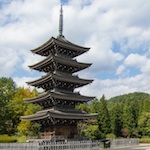| Hot Topics | |
|---|---|
Tohoku Earthquake, Tsunami and Nuclear Disaster!!!
Re: Tohoku Earthquake, Tsunami and Nuclear Disaster!!!
Latest joke in fukushima:
They don't factor in the terrain slope when they build a water tank...
http://www3.nhk.or.jp/nhkworld/english/ ... 03_18.html
Seems nearly too stupid to be true, even by Japanese construction standard, even re-lowered to post fukushima's standards...
They don't factor in the terrain slope when they build a water tank...
http://www3.nhk.or.jp/nhkworld/english/ ... 03_18.html
Seems nearly too stupid to be true, even by Japanese construction standard, even re-lowered to post fukushima's standards...
-

Coligny - Posts: 21821
- Images: 10
- Joined: Sat Jan 17, 2009 8:12 pm
- Location: Mostly big mouth and bad ideas...
Re: Tohoku Earthquake, Tsunami and Nuclear Disaster!!!
Hmm, Coligny, the link does not work.
Anyway, the following video shows what an Einsteins they are at TEPCO.
They built these tanks on a slope, connect them by pipes so that they are communicating vessels, pomp water in the top one, measure water level in the top one, and then surprise surprise the bottom one overflows.
Aaaaarrrggghhhh.
Anyway, the following video shows what an Einsteins they are at TEPCO.
They built these tanks on a slope, connect them by pipes so that they are communicating vessels, pomp water in the top one, measure water level in the top one, and then surprise surprise the bottom one overflows.
Aaaaarrrggghhhh.
“To learn who rules over you, simply find out who you are not allowed to criticize.”
“I know not with what weapons World War III will be fought, but World War IV will be fought with sticks and stones.” ― Albert Einstein
-

Russell - Maezumo
- Posts: 8580
- Images: 1
- Joined: Fri Aug 13, 2010 11:51 pm
Re: Tohoku Earthquake, Tsunami and Nuclear Disaster!!!
Is this in the kaigai media at all? How fucking incompetent can you get?
-

matsuki - Posts: 16047
- Joined: Wed Feb 02, 2011 4:29 pm
- Location: All Aisu deserves a good bukkake
Re: Tohoku Earthquake, Tsunami and Nuclear Disaster!!!
chokonen888 wrote:How fucking incompetent can you get?
That's a question that's gonna be answered, whether we like it or not...
•I prefer liberty with danger to peace with slavery.•
-

Mike Oxlong - Posts: 6818
- Joined: Wed Oct 20, 2004 5:47 pm
- Location: 古き良き日本
Re: Tohoku Earthquake, Tsunami and Nuclear Disaster!!!
chokonen888 wrote:Is this in the kaigai media at all? How fucking incompetent can you get?
Careful. That sounds like a challenge they just might accept.
Faith is believing what you know ain't so. -- Mark Twain
-

Samurai_Jerk - Maezumo
- Posts: 14387
- Joined: Mon Feb 09, 2004 7:11 am
- Location: Tokyo
Re: Tohoku Earthquake, Tsunami and Nuclear Disaster!!!
chokonen888 wrote:Is this in the kaigai media at all? How fucking incompetent can you get?
Yes, at least some overseas media have been right on top of this. Mercilessly, even. I remember seeing it on the BBC as well as the Oz news.
-

Yokohammer - Posts: 5090
- Joined: Tue Sep 30, 2008 6:41 pm
- Location: South of Sendai
Re: Tohoku Earthquake, Tsunami and Nuclear Disaster!!!

"Let me assure you, the situation is under control."
Would having the Olympics taken from them finally wake them up about this shit?
-

matsuki - Posts: 16047
- Joined: Wed Feb 02, 2011 4:29 pm
- Location: All Aisu deserves a good bukkake
Re: Tohoku Earthquake, Tsunami and Nuclear Disaster!!!
Samurai_Jerk wrote:chokonen888 wrote:Is this in the kaigai media at all? How fucking incompetent can you get?
Careful. That sounds like a challenge they just might accept.
The gauntlet has been picked up.
Fukushima worker accidentally switches off cooling pumps; backup kicks in
The operator of Japan’s crippled Fukushima nuclear plant said on Monday that pumps used to inject water to cool damaged reactors were hit by a power failure, but a backup system kicked in immediately.
The Nuclear Regulation Authority said a worker conducting system inspections mistakenly pushed a button turning off power to some of the systems in the four reactor buildings at the Fukushima plant.
Plant operator Tokyo Electric Power Co (TEPCO) pours hundreds of tons of water a day over the reactors to keep them cool after a devastating earthquake and tsunami in March 2011 triggered meltdowns and hydrogen explosions.
TEPCO said water was being pumped to the No. 1, No. 2 and No. 3 reactors at the plant and pools storing spent fuel rods were being cooled.
The latest incident is another reminder of the precarious state of the Fukushima plant, which has suffered a series of mishaps and accidents this year. Earlier this year, TEPCO lost power to cool spent uranium fuel rods at the Fukushima Daiichi plant after a rat tripped an electrical wire...
•I prefer liberty with danger to peace with slavery.•
-

Mike Oxlong - Posts: 6818
- Joined: Wed Oct 20, 2004 5:47 pm
- Location: 古き良き日本
Re: Tohoku Earthquake, Tsunami and Nuclear Disaster!!!
:doublefacepalm:
-

IparryU - Maezumo
- Posts: 4285
- Joined: Thu Jun 04, 2009 11:09 pm
- Location: Balls deep draining out
-

matsuki - Posts: 16047
- Joined: Wed Feb 02, 2011 4:29 pm
- Location: All Aisu deserves a good bukkake
Re: Tohoku Earthquake, Tsunami and Nuclear Disaster!!!
Mike Oxlong wrote:Samurai_Jerk wrote:chokonen888 wrote:Is this in the kaigai media at all? How fucking incompetent can you get?
Careful. That sounds like a challenge they just might accept.
The gauntlet has been picked up.
Fukushima worker accidentally switches off cooling pumps; backup kicks in
But of course, the poor man was wondering all the time what that red button was for.
Now he knows.
“To learn who rules over you, simply find out who you are not allowed to criticize.”
“I know not with what weapons World War III will be fought, but World War IV will be fought with sticks and stones.” ― Albert Einstein
-

Russell - Maezumo
- Posts: 8580
- Images: 1
- Joined: Fri Aug 13, 2010 11:51 pm
Next chapter of incompetence
6 workers contaminated by Fukushima water leak
Problem is that the people employed there are likely untrained homeless, so I can hardly blame them. But what is TEPCO thinking?
Six workers at Japan’s crippled nuclear power plant have been accidentally doused with highly radioactive water, the plant operator said Wednesday, adding to a growing list of mishaps that are shaking confidence in the utility’s ability to handle the crisis.
The workers removed the wrong pipe from equipment at the plant, sending toxic water spilling onto them and the entire floor of the facility housing a set of three units designed for primary, partial water treatment, said Yoshimi Hitosugi, the spokesman for Fukushima Dai-ichi nuclear plant operator Tokyo Electric Power Co.
Exposure to the workers, who were wearing face masks with filters, protective hazmat suits and raingear, is believed minor but still under investigation, Hitosugi said. The six were part of an 11-member team, and the remaining five were not splashed, he said. The workers managed to reattach the pipe.
The accident is the latest in a spate of leaks and other problems caused by human error that have added to public criticism of TEPCO’s handling of the crisis at the Fukushima Dai-ichi, which is still in precarious condition since its triple meltdowns following the March 2011 earthquake and tsunami.
In order to keep the melted reactors cool, they must be continuously doused with water that then becomes contaminated with radiation and must be pumped out and stored in tanks at the site.
Last week, workers overfilled a storage tank without fully checking water levels, causing a leak, possibly to the sea.
In August, the utility reported a 300-ton leak from another storage tank. That came after the utility and the government acknowledged that contaminated groundwater was seeping into ocean at a rate of 300 tons a day for some time.
Japan’s Nuclear Regulation Authority Chairman Shunichi Tanaka said repeated mishaps could be a sign of the harsh work environment.
“Careless mistakes are often linked to (declining) morale,” Tanaka said a regular news conference. “People usually don’t make silly, careless mistakes when working in positive environment and motivated. The lack of it, I think, may be related to the recent problems.”
Problem is that the people employed there are likely untrained homeless, so I can hardly blame them. But what is TEPCO thinking?
“To learn who rules over you, simply find out who you are not allowed to criticize.”
“I know not with what weapons World War III will be fought, but World War IV will be fought with sticks and stones.” ― Albert Einstein
-

Russell - Maezumo
- Posts: 8580
- Images: 1
- Joined: Fri Aug 13, 2010 11:51 pm
Re: Tohoku Earthquake, Tsunami and Nuclear Disaster!!!
There was no Fukushima nuclear disaster. Total number of people killed by nuclear radiation at Fukushima was zero. Total injured by radiation was zero. Total private property damaged by radiation….zero. There was no nuclear disaster. What there was, was a major media feeding frenzy fuelled by the rather remote possibility that there may have been a major radiation leak.
--Some pseudo scientist guy from a country mostly known for its rape statistics and appartheid. (South Africa)
Moar: http://ex-skf.blogspot.jp/2013/10/ot-so ... icist.html
WHERE do they find these idiots ? Do they give some hobo in the street a shower, a white coat, a sandwich and a paper to read ?
-

Coligny - Posts: 21821
- Images: 10
- Joined: Sat Jan 17, 2009 8:12 pm
- Location: Mostly big mouth and bad ideas...
Re: Tohoku Earthquake, Tsunami and Nuclear Disaster!!!
You ain't seen nothing yet, Coligny, you ain't seen nothing yet...
“To learn who rules over you, simply find out who you are not allowed to criticize.”
“I know not with what weapons World War III will be fought, but World War IV will be fought with sticks and stones.” ― Albert Einstein
-

Russell - Maezumo
- Posts: 8580
- Images: 1
- Joined: Fri Aug 13, 2010 11:51 pm
Re: Tohoku Earthquake, Tsunami and Nuclear Disaster!!!
What a piece of work....
-

Coligny - Posts: 21821
- Images: 10
- Joined: Sat Jan 17, 2009 8:12 pm
- Location: Mostly big mouth and bad ideas...
Re: Tohoku Earthquake, Tsunami and Nuclear Disaster!!!
Wow... Food for thought.
Sent from my SC-03E using Tapatalk 2
Sent from my SC-03E using Tapatalk 2
"I thought what I'd do was, I'd pretend I would pull out, but won't."
-

IparryU - Maezumo
- Posts: 4285
- Joined: Thu Jun 04, 2009 11:09 pm
- Location: Balls deep draining out
Re: Next chapter of incompetence
Russell wrote:6 workers contaminated by Fukushima water leak
High radioactivity in Fukushima Daiichi ditch
NHK World Oct. 17, 2013
The operator of the damaged Fukushima Daiichi nuclear power plant says it has detected high levels of radioactivity in a ditch leading to the sea, after Typhoon Wipha brought heavy rain...
...Officials at the Tokyo Electric Power Company say they detected 1,400 becquerels per liter of beta ray-emitting radioactive material at a measuring point 150 meters from the sea on Wednesday.
The figure was more than 70 times higher than readings taken on Tuesday. It's also the highest since monitoring of the ditch water was started in August...more....
Seeking Efficiency, Japan Will Now Only Report Days When TEPCO Doesn't Find Another Leak --(@DailyGomiuri)'s twitter October 17, 2013
You do not have the required permissions to view the files attached to this post.
-

Taro Toporific - Posts: 10021532
- Images: 0
- Joined: Tue Sep 10, 2002 2:02 pm
Re: Tohoku Earthquake, Tsunami and Nuclear Disaster!!!
Freelance journalist vs “Nuclear Mafia”: the good guys win…for now
http://www.japansubculture.com/freelanc ... uds-ahead/
Last week, on October 18th, more than 50 people with different backgrounds: reporters, editors, politicians, singers and actors gathered in the basement of a Tokyo building to celebrate the rare victory of a journalist against a SLAPP (Strategic Lawsuits Against Public Participation) lawsuit. Strategic Lawsuits Against Public Participation (SLAPP) are designed to censor and silence individual reporters or independent media by forcing them to pay the cost of a legal defense; by doing so- it ruins them financially. These kind of lawsuits are penalized in California and many places in the United States but in Japan, there is no legal protection. The journalist or media outlet who is sued loses (financially), even if they win in court.
All those present at Minoru Tanaka’s victory celebration were people concerned about freedom of the press, and the very essence of democracy, now in danger in Japan as a new secrecy bill is about to pass.
Minoru Tanaka’s story is the story of one man, one journalist. He was sued in 2012 for a story he wrote about a shadowy figure in the Japanese nuclear industrial complex, also sometimes called the nuclear mob (原発マフィア). The plaintiff found the story embarrassing and of course, as always in these cases, he had the financial power and luxury to launch a legal assault on the lone reporter.
In his article published on December 16th, 2011 in Weekly Friday (週刊金曜日), Mr. Tanaka, who has long been investigating and reporting the shady side of Japan’s so-called Nuclear Village also known as the Nuclear Mafia (原発マフィア), focussed on one kingpin. There are few reporters who have a better sense of the complicated relations between politicians, electric power companies, media tycoons, advertisement agencies, construction companies and of course, the Japanese police and the Japanese mafia. The reward for his magnum opus was being sued for a total of 67,000,000 yen by one of Japan’s most powerful nuclear industry businessmen, Shiro Shirakawa, for damage and defamation. Mr. Shirakawa, a former secretary to LDP Diet member and power broker, Hiroshi Mitsuka, is well-connected and has great influence in Japanese society.
It was the first time in Japan that a journalist was sued individually for an article he wrote, but not the magazine that published it. Minoru Tanaka is a hero for some of his supporters. He says he simply did his job as an investigative reporter and was punished for revealing the truth to the public...
http://www.japansubculture.com/freelanc ... uds-ahead/
•I prefer liberty with danger to peace with slavery.•
-

Mike Oxlong - Posts: 6818
- Joined: Wed Oct 20, 2004 5:47 pm
- Location: 古き良き日本
Re: Tohoku Earthquake, Tsunami and Nuclear Disaster!!!
So basically... The american lapdog is going to emulate his master even more...
Bad luck they didn't have their own 911 to impose more tightenning under the motto "you are with us or a terrurist"
Bad luck they didn't have their own 911 to impose more tightenning under the motto "you are with us or a terrurist"
-

Coligny - Posts: 21821
- Images: 10
- Joined: Sat Jan 17, 2009 8:12 pm
- Location: Mostly big mouth and bad ideas...
Re: Tohoku Earthquake, Tsunami and Nuclear Disaster!!!
Coligny wrote:So basically... The american lapdog is going to emulate his master even more...
Bad luck they didn't have their own 911 to impose more tightenning under the motto "you are with us or a terrurist"
Don't give them any ideas.
“To learn who rules over you, simply find out who you are not allowed to criticize.”
“I know not with what weapons World War III will be fought, but World War IV will be fought with sticks and stones.” ― Albert Einstein
-

Russell - Maezumo
- Posts: 8580
- Images: 1
- Joined: Fri Aug 13, 2010 11:51 pm
Re: Tohoku Earthquake, Tsunami and Nuclear Disaster!!!
I think it's safe...
They are way too irrelevant to be on anybody's shit list internationally speaking.
That leave them only with domestic terrorists, and they wouldn't have the balls or creativity to shit a false flag based on this...
They are way too irrelevant to be on anybody's shit list internationally speaking.
That leave them only with domestic terrorists, and they wouldn't have the balls or creativity to shit a false flag based on this...
-

Coligny - Posts: 21821
- Images: 10
- Joined: Sat Jan 17, 2009 8:12 pm
- Location: Mostly big mouth and bad ideas...
Re: Next chapter of incompetence
Russell wrote:6 workers contaminated by Fukushima water leak?
TEPCO Fires Manager For Saying He Needed To Take A Leak --- @DailyGomiuri(@DailyGomiuri)October 22, 2013
You do not have the required permissions to view the files attached to this post.
Last edited by Marked Trail on Tue Oct 22, 2013 4:49 pm, edited 1 time in total.
-

Marked Trail - Maezumo
- Posts: 811
- Joined: Fri Feb 07, 2003 10:34 pm
- Location: Lost Forest
Re: Phear Phactor
For Tepco and Japan’s Fukushima Daiichi nuclear plant, toxic water stymies cleanup
http://www.washingtonpost.com/world/for ... story.html
Two and a half years after a series of meltdowns, Japan’s effort to clean up what remains of the Fukushima Daiichi nuclear plant is turning into another kind of disaster.
The site now stores 90 million gallons of radioactive water, more than enough to fill Yankee Stadium to the brim. An additional 400 tons of toxic water is flowing daily into the Pacific Ocean, and almost every week, the plant operator acknowledges a new leak.
That operator, Tokyo Electric Power Co., known as Tepco, was put in charge of the cleanup process more than two years ago and subsequently given a government bailout as its debts soared. The job of dismantling the facility was supposed to give Tepco an opportunity to rebuild credibility.
But many lawmakers and nuclear industry specialists say that Tepco is perpetuating the kinds of mistakes that led to the March 2011 meltdowns: underestimating the plant’s vulnerabilities, ignoring warnings from outsiders and neglecting to draw up plans for things that might go wrong. Those failures, they say, have led to the massive buildup and leaking of toxic water.
“Tepco didn’t play enough of these what-if games,” said Dale Klein, a former chairman of the U.S. Nuclear Regulatory Commission, who recently joined a Tepco advisory panel. “They didn’t have enough of that questioning attitude” about their plans.
The leaks into the ocean are far less toxic than the radioactive plumes that emanated from the plant after the earthquake and tsunami, forcing 160,000 people to move out of the vicinity. Thanks to that quick evacuation, experts say, there are no expectations of a Chernobyl-style spike in cancer cases — although the government is conducting thyroid checks of thousands of children. But the flow of contaminated water amounts to a slow-burning environmental disaster with implications for Japan’s wildlife and its food chain.
The problems have prompted the central government to step in with about $500 million to fund new countermeasures, including a subterranean “ice wall” designed to keep groundwater from flowing into irradiated buildings.
The latest government-led actions are particularly galling for some, who say Tepco should have taken similar measures earlier. One lawmaker, Sumio Mabuchi, who was also an adviser to then-Prime Minister Naoto Kan, says Tepco, deep in debt, neglected to take important steps against the groundwater two years ago because of concerns about its bottom line...
http://www.washingtonpost.com/world/for ... story.html
•I prefer liberty with danger to peace with slavery.•
-

Mike Oxlong - Posts: 6818
- Joined: Wed Oct 20, 2004 5:47 pm
- Location: 古き良き日本
Re: Tohoku Earthquake, Tsunami and Nuclear Disaster!!!
"Doubtful of utility's aptitude, experts urge help for dangerous operation"
This is scaring some people who don't normally scare easily, which is a tad scary.
Tepco feeling heat over fuel removal
This is scaring some people who don't normally scare easily, which is a tad scary.
Tepco feeling heat over fuel removal
With Tepco due to begin removing more than 1,300 spent-fuel rod assemblies and nearly 200 fresh ones from the reactor 4 pool at the Fukushima No. 1 plant this month, global pressure is mounting to allow an international task force to monitor and assist the highly hazardous operation.
-

Yokohammer - Posts: 5090
- Joined: Tue Sep 30, 2008 6:41 pm
- Location: South of Sendai
Re: Tohoku Earthquake, Tsunami and Nuclear Disaster!!!
Don't worry, our local waldorf and statler will tell you that everything is fine...
-

Coligny - Posts: 21821
- Images: 10
- Joined: Sat Jan 17, 2009 8:12 pm
- Location: Mostly big mouth and bad ideas...
Re: Tohoku Earthquake, Tsunami and Nuclear Disaster!!!
Wait for it.....Wait for it......
-

matsuki - Posts: 16047
- Joined: Wed Feb 02, 2011 4:29 pm
- Location: All Aisu deserves a good bukkake
Re: Tohoku Earthquake, Tsunami and Nuclear Disaster!!!
Ermagerd... Good naturally occuring radiashiunz available in pharmamcies:
Hot stuff circa 1930...
http://m.neatorama.com/2013/11/18/The-S ... rs/#!oD5iZ
Hot stuff circa 1930...
http://m.neatorama.com/2013/11/18/The-S ... rs/#!oD5iZ
You do not have the required permissions to view the files attached to this post.
-

Coligny - Posts: 21821
- Images: 10
- Joined: Sat Jan 17, 2009 8:12 pm
- Location: Mostly big mouth and bad ideas...
Re: Tohoku Earthquake, Tsunami and Nuclear Disaster!!!
Go for life, take a bath in it, drink it... http://spa-misasa.jp/eng/radium/index.html
-

wagyl - Maezumo
- Posts: 5950
- Images: 0
- Joined: Thu Mar 17, 2011 11:08 pm
- Location: The Great Plain of the Fourth Instance
Re: Tohoku Earthquake, Tsunami and Nuclear Disaster!!!
Fukushima Radioactive Hot Springs - adds years of pain and suffering to your life and does wonders for expecting mothers!
-

matsuki - Posts: 16047
- Joined: Wed Feb 02, 2011 4:29 pm
- Location: All Aisu deserves a good bukkake
Re: Tohoku Earthquake, Tsunami and Nuclear Disaster!!!
Yes, pretty much in line with the overall state of the art medical practices in japan...
-

Coligny - Posts: 21821
- Images: 10
- Joined: Sat Jan 17, 2009 8:12 pm
- Location: Mostly big mouth and bad ideas...
Return to Earthquakes, Tsunamis, Nukes, and other Catastrophes
Who is online
Users browsing this forum: No registered users and 0 guests

